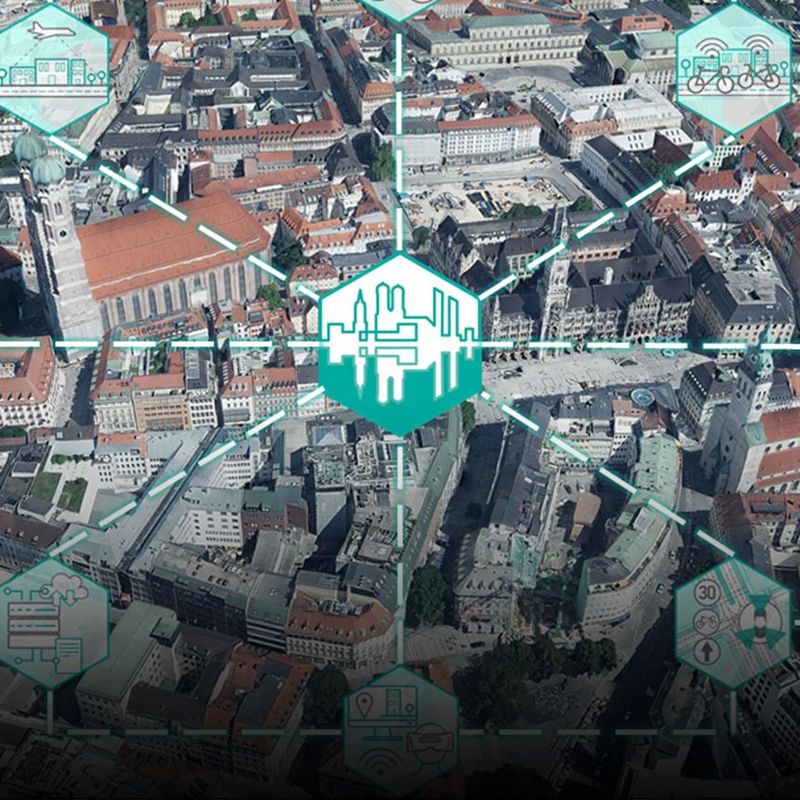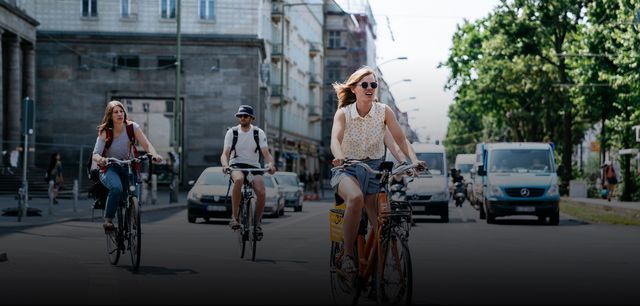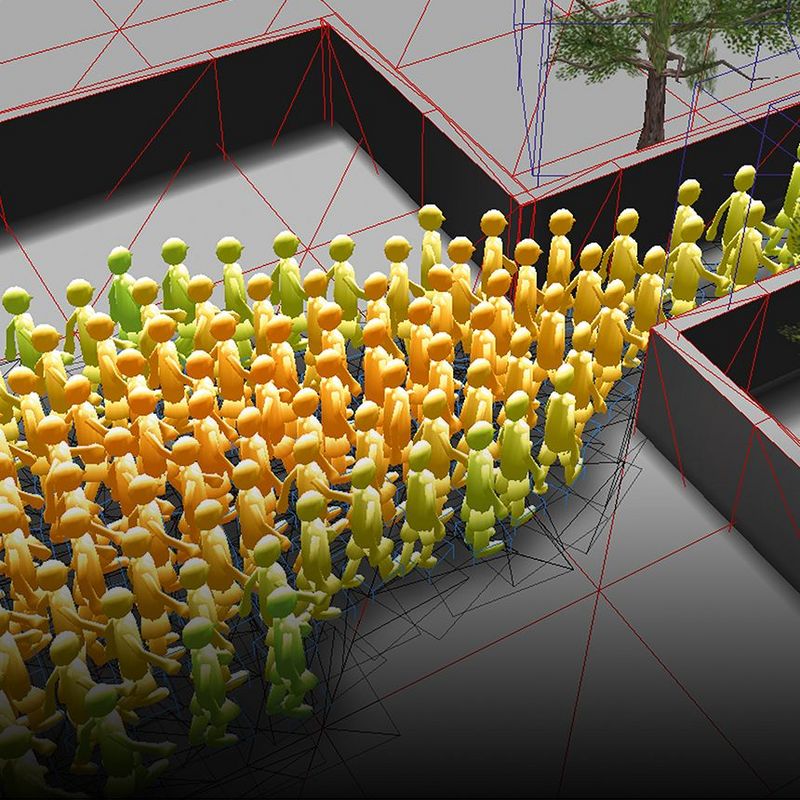16 february 2023
During the coronavirus pandemic, the roads became a lot safer. But since then, the number of traffic accidents has almost returned to where it was in 2019. And it’s still the case that, in cities, the most vulnerable road users run the highest risk of injury. For instance, in 2022 in Berlin, every second recorded death was of a pedestrian or a cyclist, whereas only one in five was in a vehicle. Municipalities and citizens’ initiatives alike want to make road traffic friendlier for pedestrians and cyclists.
Giving way to pedestrians
Pedestrian-operated traffic lights normally work as follows: cars have an unimpeded right of passage; in other words, the green light is the norm. People on bikes or on foot have to push the button, and only then will the traffic lights change from green to red. This principle was reversed for the first time in 2021 in Karlsruhe. Hamburg followed suit in December last year: at a junction in the popular Eimsbüttel district, it’s now cyclists and pedestrians who have priority. Immediately adjacent to the junction are a small canal-side park, a swimming pool and a gym, which means that correspondingly large numbers of people wish to cross the road on foot or on bicycles – and the idea is that they shouldn’t have to wait. With this new priority system, cars only get the green light on request. When a car approaches the traffic lights, a heat-sensitive camera fires up and, after a short while, the lights change to green. When the traffic is heavier, the light stays green for longer. Buses are, as before, given priority at the junction: they can transmit a request for “green” in advance from various signalling points to allow them to pass through the lights without delay. If this new traffic light principle passes muster, four more junctions in the Hanseatic city will then be converted along the same lines by 2024.
© Klaus Radetzki, Getty Images
Green light: cyclists can move easily and fast on dense bike routes in cities like Copenhagen, Karlsruhe and Hamburg.
Going to school in a cycle convoy
For children on their way to school in the morning in Barcelona, the roads are converted into cycle paths. About one hundred kids pedal though the Spanish metropolis, accompanied by parents and the police. The roads they use are closed to cars for the duration. Anyone who want to join the “Bicibus” – as this convoy of bikes is called – can simply tag along from a street corner and leave the convoy again when they get to school. In this way, even the very youngest can learn to ride safely. This initiative, which was launched in March 2021, hopes to use this positive experience to induce children to get on their bikes at a younger age and more often. There are now 15 Bicibus routes throughout Barcelona. Some of them are used every day, others only on individual weekdays. And the idea is catching on across Europe: Madrid, Glasgow and Vienna are now also allowing cycle convoys onto their streets. In Germany, Bicibus convoys are available to children living in Frankfurt am Main, Halle and Hamburg.
Safety first: school kids all over Europe bike to school without traffic in the so called "Bibicus" bike convoy.
Fresh air in place of dad’s taxi
In the Paderborn district, schoolchildren are clubbing together to do shorter journeys to school on foot. Kids are also boarding the “walking bus” every morning in Osnabrück. The idea first originated in the United Kingdom: by walking to school together in the fresh air, primary school kids start the day off with exercise, meaning that they are more awake and cheerful when they start school. And, no less importantly, they learn under supervision how to get around safely and ever more independently in traffic. This is an active alternative to the mums’ and dads’ taxis which clog up the roads around nurseries and schools first thing in the morning and pose a constant risk to the children who attend them.
30 km/h speed limit in urban areas
What fills some drivers with dread – the 30 km/h urban speed limit – is also considered to be a royal road to “Vision Zero” – zero deaths in road traffic. After all, the smaller the difference in speed between road users, the lower the risk of accidents. Helsinki is “streets ahead” here: In the Finnish capital, a 30 km/h speed limit was adopted and introduced as part of the “Vision Zero” strategy back in 2019. The results were immediate: in the very same year, for the first time, not a single pedestrian or cyclist was killed in a traffic accident. In German traffic law, 30 km/h speed limits are the exception to the rule. City authorities are only allowed to impose them on limited sections of main roads – for instance, in front of schools, nurseries and care homes or on very busy roads, with the aim of reducing nitrogen oxide emissions. The “Lebenswerte Städte” (“Liveable Cities”) initiative aims to change all this: the idea is to allow local authorities to impose 30 km/h speed limits in urban areas wherever they see fit. The initiative was launched in July 2021 by seven cities, including Aachen, Münster and Hanover. Some 440 have subsequently joined, ranging from Berlin to Cologne, and Bad Segeberg to Brunn. As well as improving road safety, by introducing 30 km/h speed limits the local authorities involved also anticipate quieter streets, reduced exhaust emissions and a better quality of life for all their residents. Expectations that are supported by studies carried out by the German Environment Agency. What’s more, where constantly changing speed limits are currently a major cause of confusion, uniform regulations could introduce greater clarity, the urban initiatives maintain. Not only that, but they could also meet with higher levels of acceptance – including among drivers.
„Vision Zero“: aiming for zero traffic victims! An in town speed limit of 30 is the key to protect all road users.
Green wave for cyclists
What has been the norm in Copenhagen for years is now also to be found in Karlsruhe and Hamburg: a green wave for cyclists. Along one route in the Hamburg district of Harvestehude, cyclists moving at an average speed of 18 km/h can now sail through on a wave of green lights. This works on the way into town in the mornings and in the reverse direction after midday. Along a second route through Ottensen, the green wave leads out of town. A total of eleven traffic lights have been set to work together to make this possible. Green waves like these would make most sense on roads that see a lot of bicycle traffic, says Anjes Tjarks, Senator for Transport and the Mobility Transition in Hamburg. Five more routes are being planned in the Hanseatic city.
Recommended speeds transmitted from pillars
When traffic lights are a long way apart or fewer people cycle along a particular route, a green wave is not always on option. This is because the speeds at which people cycle vary much more than they do with other means of transport. This is why, on Rothenbaumchaussee in Hamburg, speed recommendations are now being transmitted by roadside pillars – individually calculated based on the current speed of the cyclist who happens to be riding past. A green tick means that they are riding at the right speed to ensure that the next light will be green when they pass through. A yellow arrow pointing upwards or downwards means that they need to either pick up speed or slow down! And red tells them that they are going to miss the green phase altogether. In other words, they can just take their time. The pillars have no influence on car traffic because no change to the traffic light switching takes place. But bike traffic should flow more easily and be more enjoyable because the amount of stopping and starting cyclists have to contend with will be reduced to a minimum. After all, what drivers can do just by pressing down on a pedal always takes effort and muscle power if you’re on a bike
Also interesting
 Digitaler Zwilling München
Digitaler Zwilling MünchenMunich and its digital double
How to create the digital twin of a big city.
Read more





